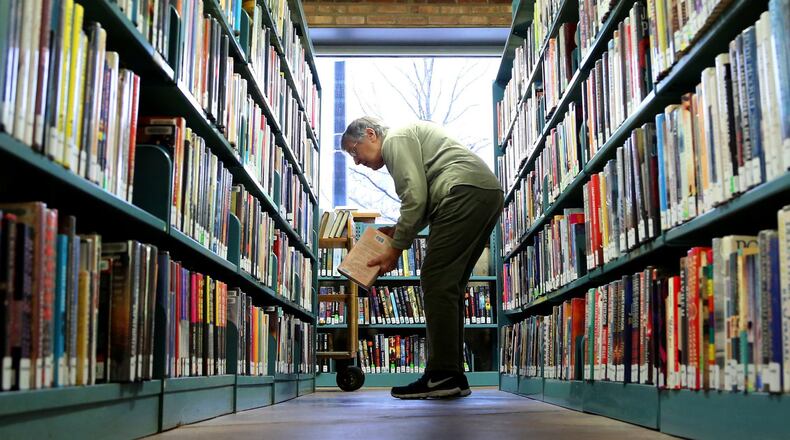Furloughed staff will be brought back in small groups to go over new safety and cleaning protocols and prepare to begin a curbside materials pick up service sometime around June 1, he said. But opening the doors for 400,000 patrons and returning to normal doesn’t seem possible until a coronavirus vaccine is available, Kambitsch said.
RELATED: DeWine says no safety guarantees as Ohio reopens for business
The Ohio Library Council earlier this month released guidance and protocols to its members.
Recommended best practices include limiting the number of patrons in certain areas, removing children’s toys and furniture, stepping up cleaning, consider having patrons wear masks or come by appointment only, increasing curbside pick up services and closing once a week for deep cleaning.
Libraries may also want to “quarantine” returned materials for three to four days before putting them out for use, the council said. Researchers at Columbus-based Battelle Memorial are conducting a study on how long the coronavirus can live on books, magazines, newspapers and other library materials.
“This is a long procedure. Scientific studies are, as you know, painstakingly planned so the results are reliable. We have only completed the literature search at this time, and we have now gotten some materials from the Columbus Public Library for testing,” said Battelle spokesman T.R. Massey.
Kambitsch said Dayton Metro Library will stash returned materials in holding tubs for three days.
While Ohio is reopening swaths of the economy, the coronavirus pandemic remains a threat. The Health Policy Institute of Ohio reported that COVID19 deaths in Ohio have already surpassed the number of motor vehicle crash deaths for all of 2018 and it’s likely that the coronavirus will cause more deaths than many other leading causes in 2020.
Kambitsch said he recognizes that many Ohioans, including K-12 students, rely on public libraries to gain access to the Internet. Library leaders are discussing the best and safest way to provide that service once branches re-open, he said.
He noted that Dayton Metro Library will ask patrons to wear masks or facial coverings as a means of protecting library staff members. Those who fail to do so will not be given service, he said.
RELATED: Coronavirus: Ohio budget report shows bad news on nearly all fronts
On top of the health crisis, public libraries are bracing for funding cuts as state tax revenues take a dive. Money that flows to the state Public Library Fund is tied to how much money is in the state’s general revenue fund. Kambitsch said the allocation for May from the state was nearly 39% below anticipated levels.
“I’m no economist but I suspect that isn’t the worst that we’ll see,” he said.
About the Author

